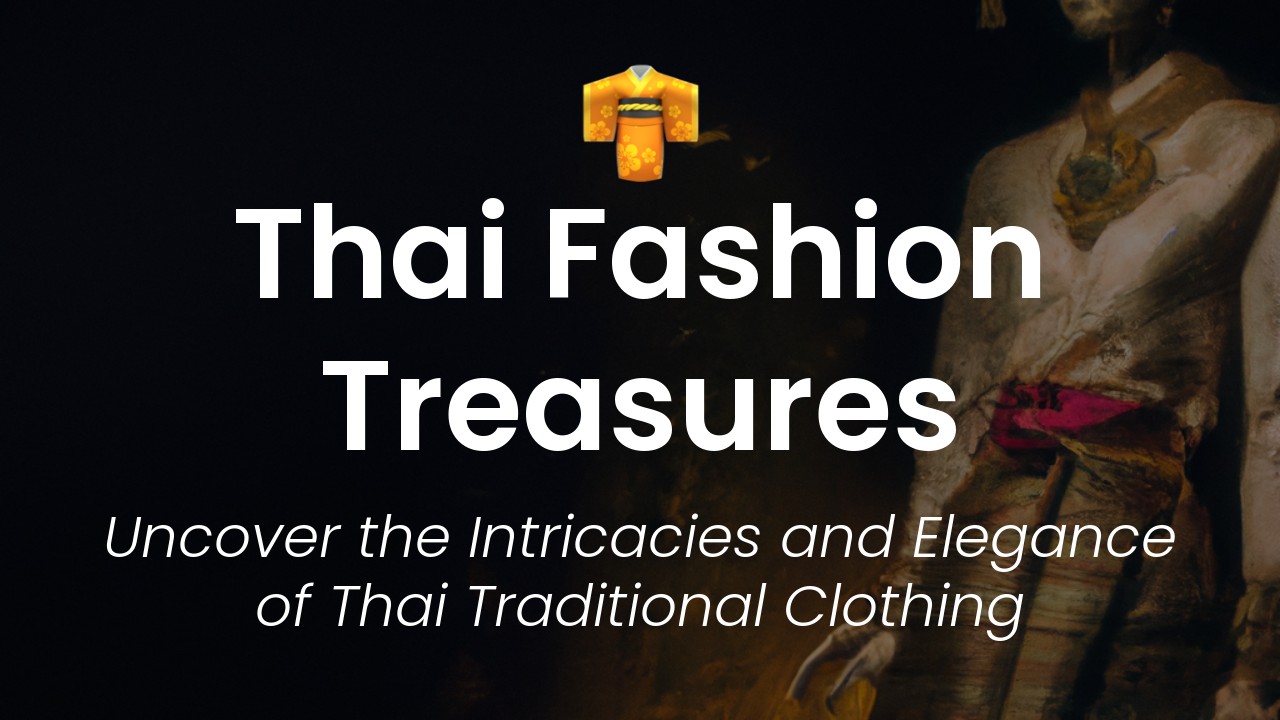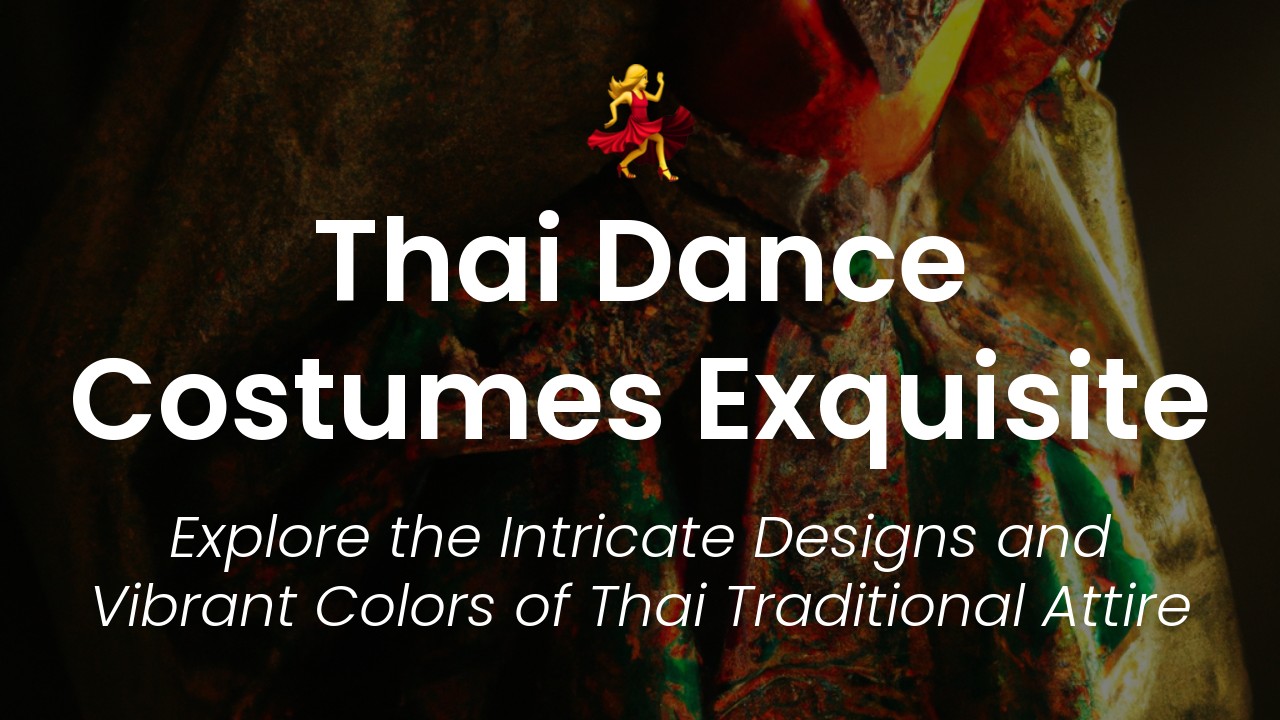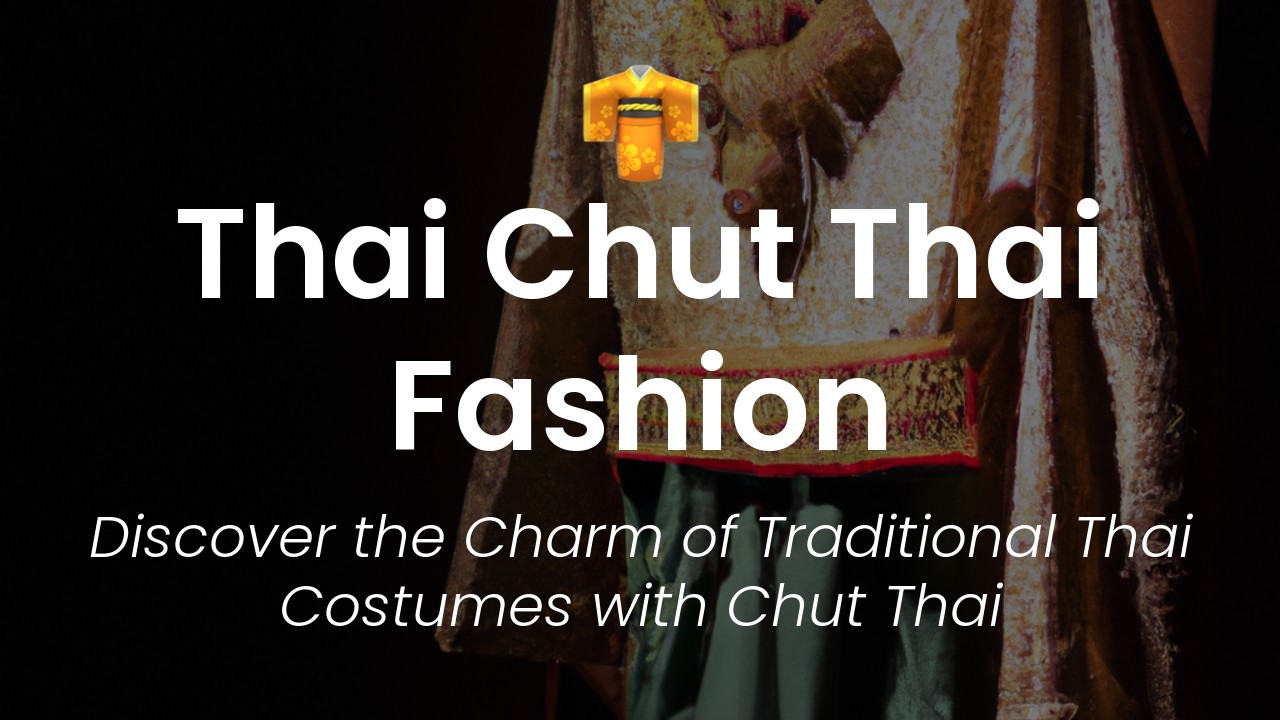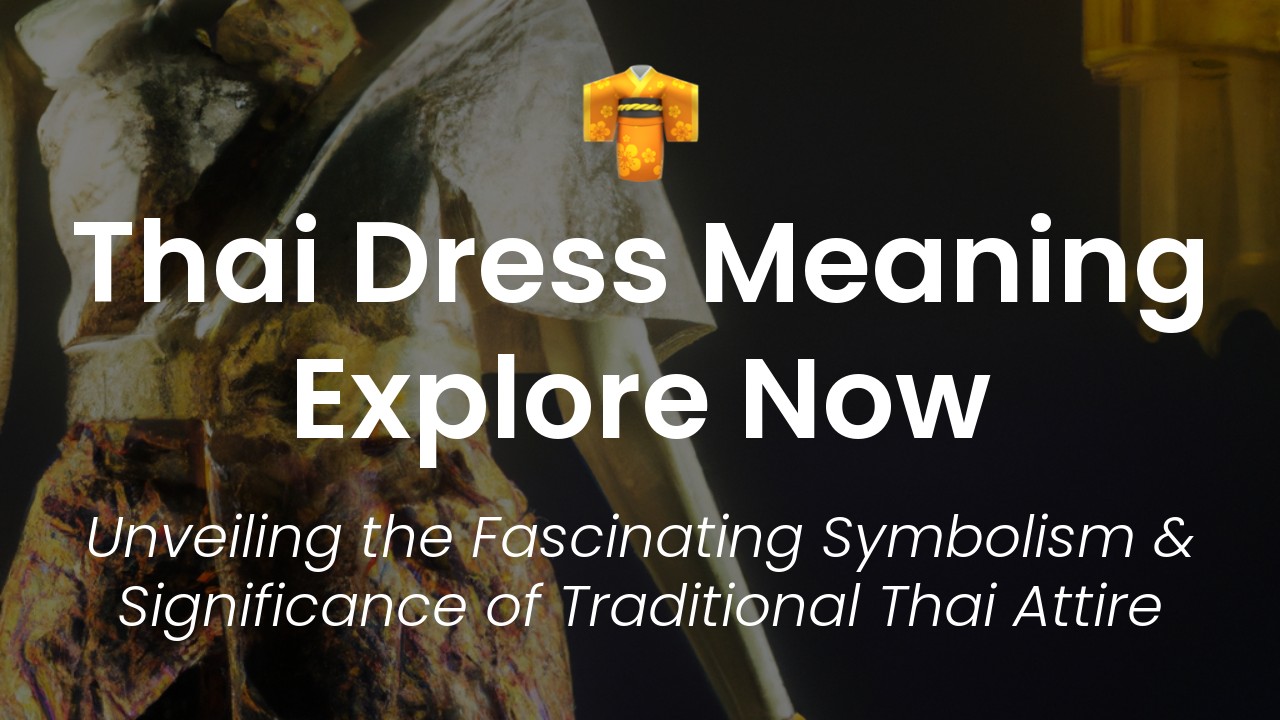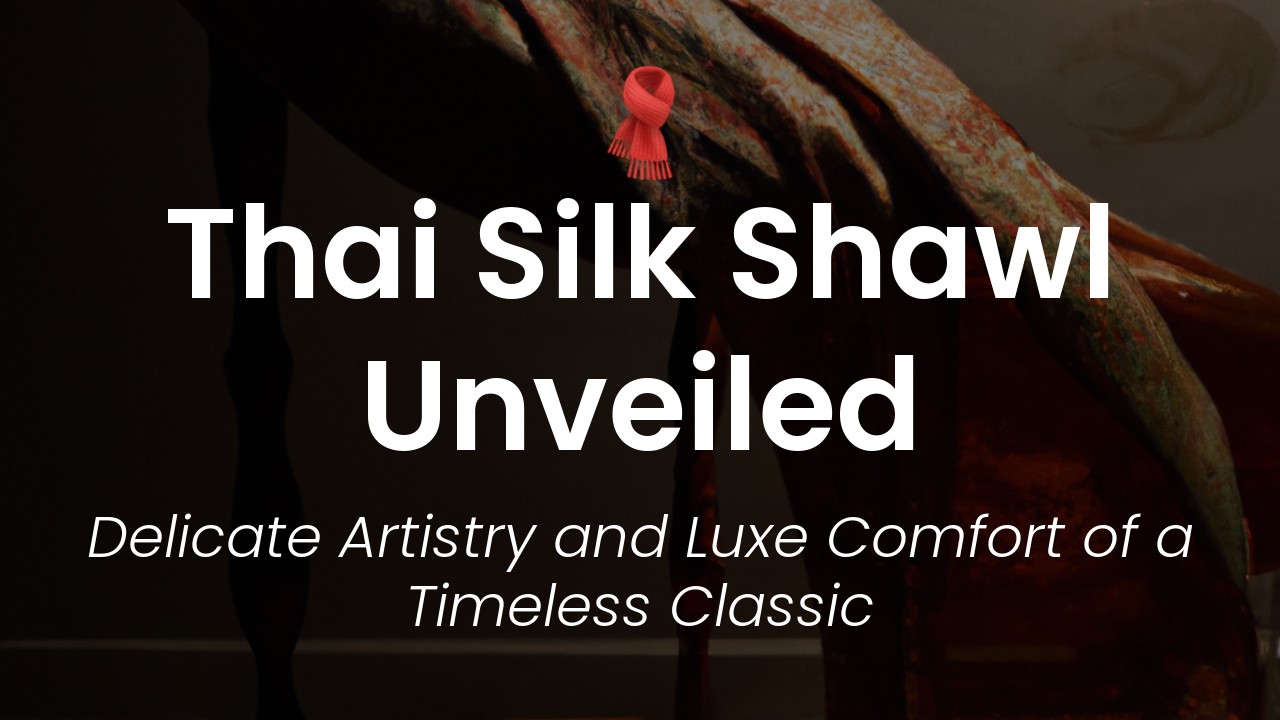As I strolled through a local market in northern Thailand, I was struck by the intricate beauty of the traditional clothing worn by some of the vendors. Each piece seemed to tell a story of its own, with patterns, colors, and styles varying from region to region.
As a Thai woman myself, I have always been fascinated by the rich history and diversity of my country's clothing traditions. From the Hill Tribes of the north to the communities of the south, each group has its own unique style and cultural significance.
That's why I've decided to dedicate this article to exploring the secrets of ancient Thai clothing and what makes it so special. Whether you're a fashion enthusiast, a history buff, or simply curious about Thailand's culture, there's something in this article for you. So, let's dive in and discover the beauty and complexity of Thai clothing together!
Hand-Woven Fabrics & Dyes
When you delve into the world of ancient Thai clothing, you cannot help but be amazed by the intricate hand-woven fabrics and the vibrant array of colors that were used to dye them. Thailand has a long history of textile production, and the skills and techniques that have been passed down over generations continue to thrive today.
The most famous of these hand-woven fabrics is undoubtedly "Thai silk". The production of silk in Thailand dates back over 5000 years, and the country has long been known for the high quality of its silk fabrics. In ancient times, Thai silk was reserved for the royal family and high-ranking officials. Today, however, anyone can enjoy the beauty and luxury of these exquisite fabrics.
The process of creating Thai silk involves raising silkworms, harvesting the cocoons, unraveling the threads, and then weaving them into fabric by hand. The resulting fabric has a unique texture and shimmer that cannot be replicated by any machine. Thai silk is also known for its ability to absorb dye, resulting in vivid colors that are as beautiful as they are durable.
Aside from silk, Thailand is also known for producing black-and-white cotton fabrics, known as "mudmee". These fabrics are created using a tie-dye technique that involves wrapping portions of the fabric with thread before dyeing it in indigo. The result is a stunning symmetrical pattern that is both traditional and modern.
The process of creating mudmee is a time-consuming and skilled process, with each step requiring the careful attention of the craftspeople involved. From spinning the cotton to dyeing and weaving, every stage of the process requires patience, precision, and expertise. Mudmee fabrics are still used today in traditional clothing, but they have also found their way into contemporary fashion, and are often used in bags, accessories, and home décor.
Intricate Embroidery Techniques
In addition to hand-woven fabrics, ancient Thai clothing was also known for its intricate embroidery techniques. Embroidery was used to add details and motifs to garments, and also to create elaborate patterns on shawls and accessories.
One of the most famous embroidery techniques in Thailand is "phneedlework". This technique involves using a very fine and sharp needle to create tiny stitches on the fabric. The resulting stitches are incredibly detailed and precise, and are often used to create patterns like flowers, feathers, and intricate geometric shapes.
Another type of embroidery that is commonly used in Thailand is "goldwork". As the name suggests, this technique involves using gold thread to create beautiful patterns on the fabric. Goldwork can be used to create anything from simple lines and borders to elaborate, multicolored designs.
Both phneedlework and goldwork require highly skilled craftspeople who have spent years honing their talents. These techniques are still used today in traditional clothing, but they have also found their way into modern fashion. You may see them used in everything from wedding gowns to accessories like bags and shoes.
Symbolism & Meaning in Garments
Ancient Thai clothing was not just beautiful; it was also rich in symbolism and meaning. Many of the garments worn by the people of ancient Thailand were imbued with sacred significance, and were used for specific purposes.
One such garment is the "pha sin", a traditional wrap skirt worn by women. The pha sin is often made from hand-woven silk, and features intricate patterns and designs. The color and pattern of the pha sin can signify the wearer's age, status, and beliefs. For example, young girls may wear bright, floral patterns, while older women may prefer more subdued, geometric designs. The pha sin is often worn during important ceremonies and events, such as weddings and religious festivals.
Another garment with special meaning is the "suea paa", or "tiger shirt". This shirt is worn by men and is meant to represent strength and courage. The shirt is typically made from cotton and features a striking tiger stripe pattern. The suea paa is often worn during martial arts competitions and other physical activities.
These are just a few examples of the rich symbolism and meaning woven into ancient Thai garments. Every garment was carefully crafted and lovingly adorned with patterns and designs that carried deep significance.
Differences Between Regional Styles
Thailand is a large and diverse country, and each region has its own unique style of traditional clothing. From the intricate embroidery of the north to the bold colors of the south, each region's clothing reflects its history, culture, and geography.
In the north of Thailand, the traditional clothing of hill tribe communities is known for its bright, intricate embroidery. The patterns are often inspired by nature, featuring motifs like flowers, birds, and animals. The embroidery is usually done by hand using a single needle, and the resulting patterns are incredibly detailed and colorful.
In the south of Thailand, the traditional clothing of Muslim communities is often characterized by a bold use of color and pattern. Garments like the "baju kurung", a long tunic worn over a skirt, feature vibrant patterns and designs that reflect the region's rich history and culture.
The northeast of Thailand is known for its traditional "sinh", a wrap skirt worn by women. The sinh is usually made from hand-woven silk, and is often adorned with intricate patterns and designs. The colors and patterns of the sinh vary by region, with some areas favoring bright, floral patterns, and others preferring more muted tones.
These are just a few examples of the rich diversity of traditional clothing in Thailand. Each region has its own style and techniques, but all share a common commitment to craftsmanship and beauty.
Influence of Modern Fashion Trends
While ancient Thai clothing is still revered and admired today, it is also true that modern fashion trends have had an impact on traditional clothing. Many Thai designers are incorporating traditional fabrics and techniques into modern clothing, creating unique and beautiful garments that blend the old and the new.
For example, many Thai fashion designers are using mudmee fabrics to create modern dresses, blouses, and skirts. The resulting garments are often bold and colorful, with an abstract quality that is very modern and fresh.
Other designers are taking traditional patterns and motifs and using them in contemporary ways. For example, a designer may take a traditional phneedlework pattern and use it to create a modern handbag. The resulting bag is both beautiful and unique, blending old traditions with new ideas.
In conclusion, ancient Thai clothing is a beautiful and fascinating subject. From hand-woven silks to intricate embroidery, these garments are a testament to the skill and creativity of the craftspeople who made them. By learning about these traditions and techniques, we can gain a greater appreciation for the richness and diversity of Thailand's cultural heritage.

